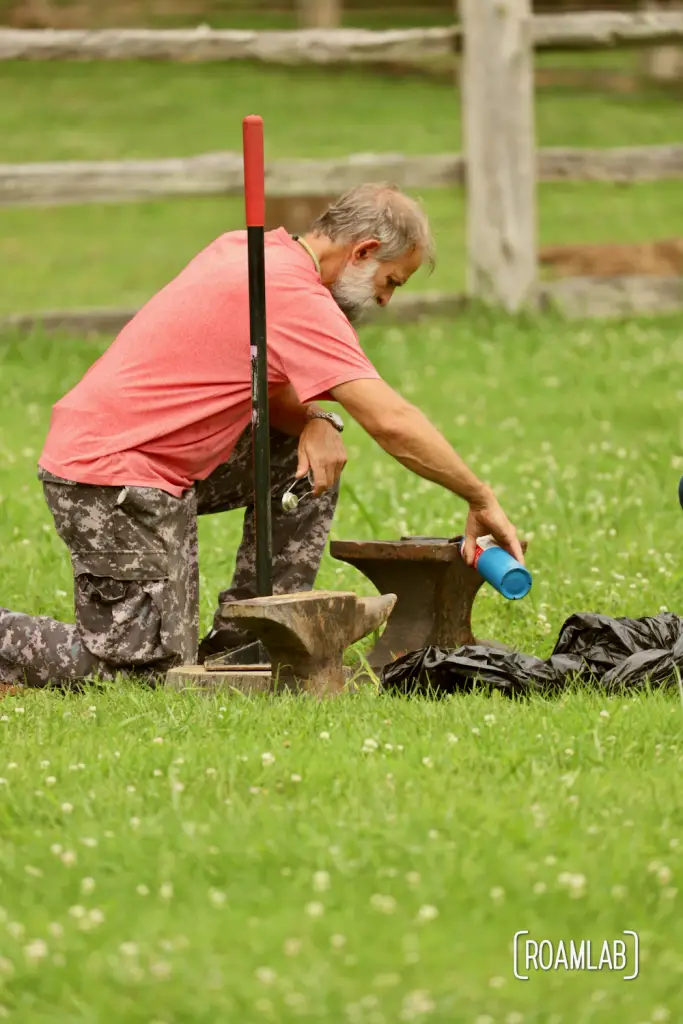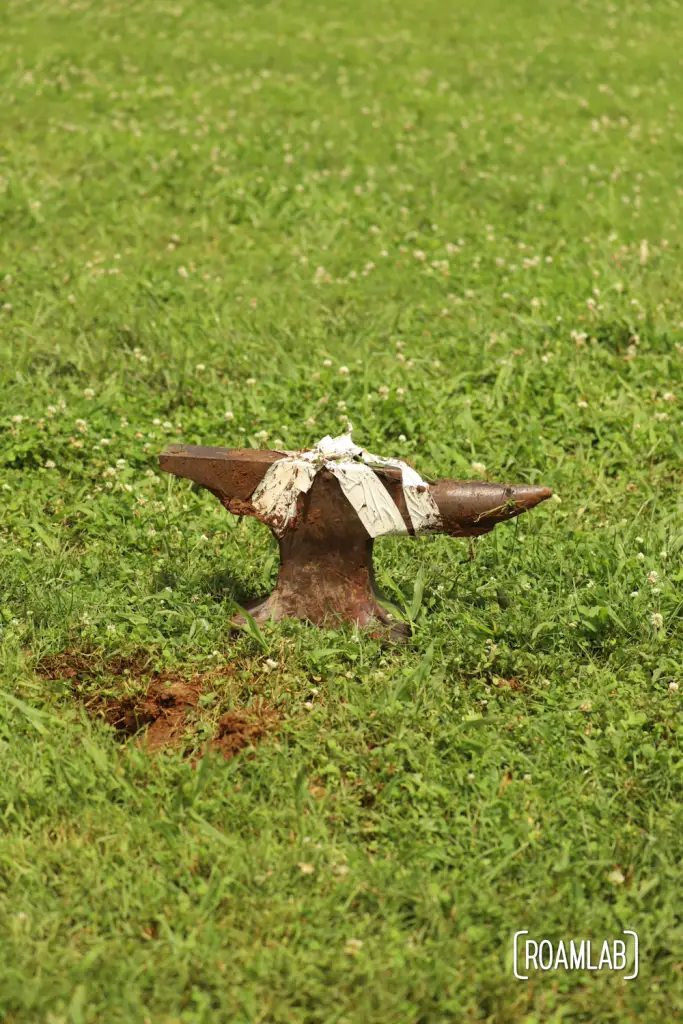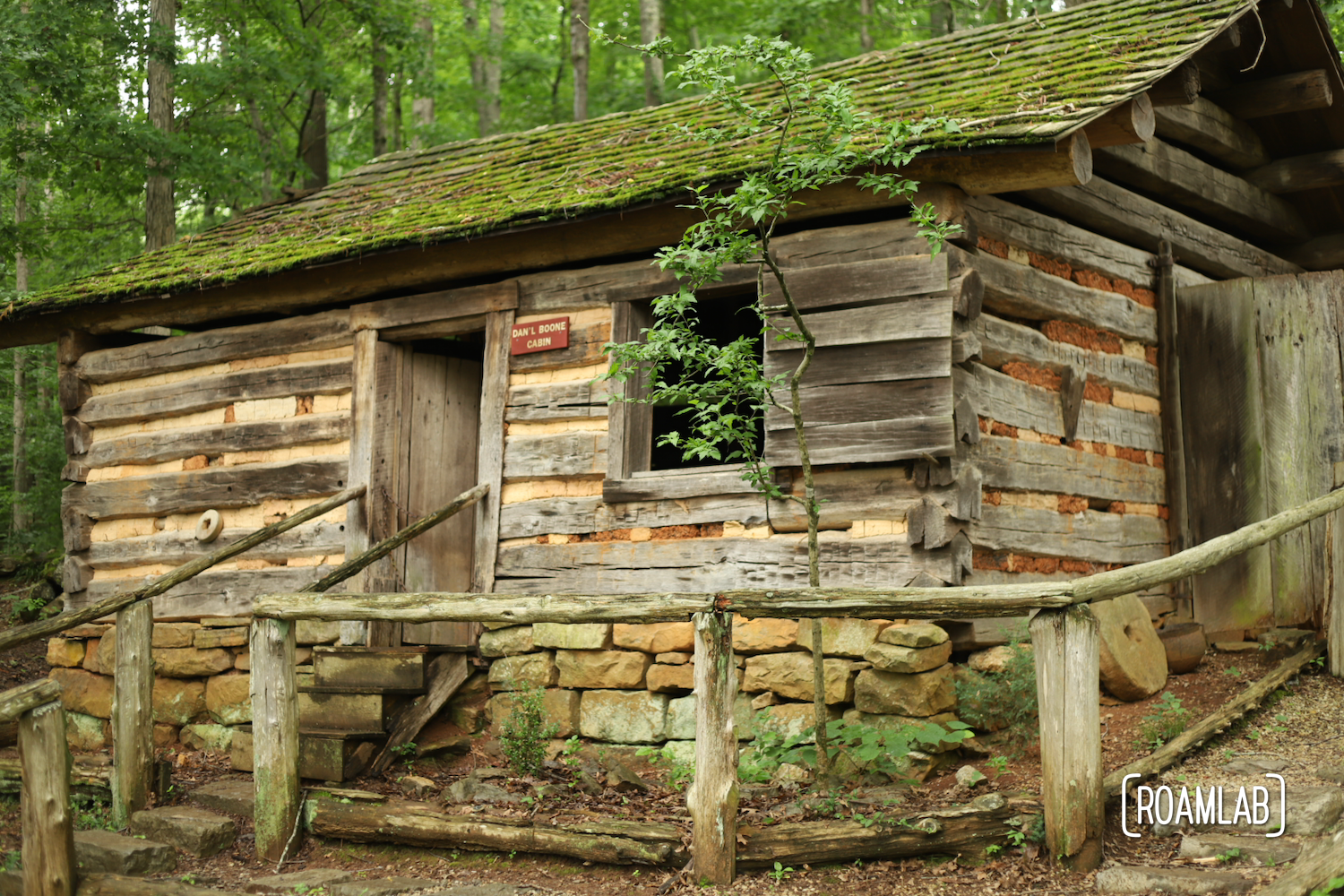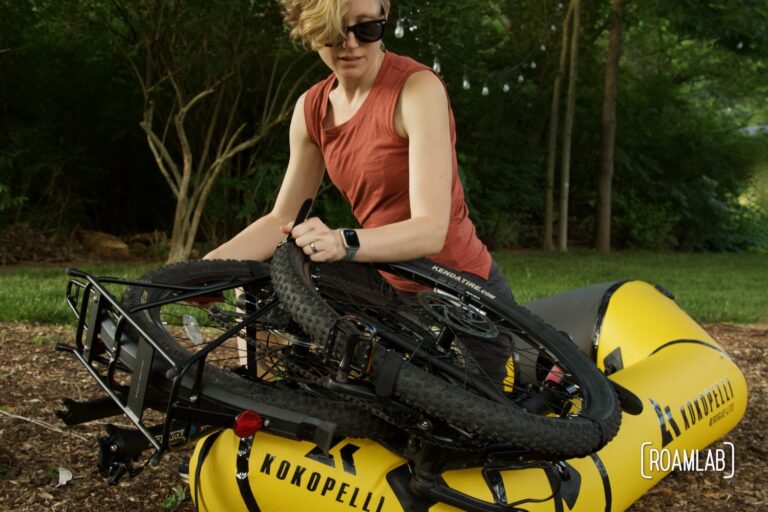Anvil shoots (aka Anvil firing or anvil launching) were a common means of celebrating special events in rural communities. As a rural analog to fireworks, anvils went flying to celebrate Independence Day, Christmas, and even Davy Crockett’s election to the U.S. Congress. The tradition continues every 4th of July at the Museum of Appalachia in Clinton, Tennessee and we had the privilege to observe it.
Flying Blacksmith Equipment
The general method of shooting an anvil into the sky is fairly straightforward. Despite what the name might insinuate, it involves more than one anvil and no barrels.* A large anvil is placed in the middle of a field to act as the launch pad. The explosive black powder is poured on the top of the anvil. Then a smaller anvil (the anvil to be launched) is ever so carefully placed on top of the base anvil and explosives, with a wick held in between. When all is ready and viewers are all a sufficient distance from the launch point, the launcher lights the wick and the anvil goes flying.
The exact height of the anvil’s trajectory can be highly variable. Humid weather conditions can limit the explosive power of the gunpowder. But the anvil can shoot over 100 feet into the air. Where it comes down has a lot to do with the launch team’s skill and weather conditions. So, yeah, do not do this at home. Between uncertain trajectories, shrapnel, and premature explosions, it most definitely could kill someone.
As dangerous as the anvil shoot is. It could be worse. In a filmed historic recreation, one actor launches an anvil by violently dropping it on a pile of explosive gunpowder. You can only imagine how unpredictable the trajectory of such an anvil could be!


Witnessing an Anvil Shoot
The tradition continues every 4th of July at the Museum of Appalachia in Clinton, Tennessee. It is the highlight of a day of living history, traditional games, a flag procession, and bell-ringing ceremony. We had the privilege of getting a sneak peek of the Anvil Shoot in a rehearsal a few days before July 4, 2020. It was a perfect day with blue skies to see the Anvil Shoot. Even so, I was surprised by the speed and height the anvil gained and quickly lost track of it as it soared into the blue skies. When it returned to earth, the anvil buried into the grassy turf, half-submerged in the brown earth.
There aren’t a lot of places to see an anvil shoot these days. And while they don’t pack the dazzling colors of fireworks, it’s an event you should witness at least once.

* This does vary. Some anvil shoots use a rock as the base, so only one anvil is use. Similarly, the arrangement of anvils can vary. A common method is to have the base anvil upside down and the launched anvil right side up, matching their meeting points.





